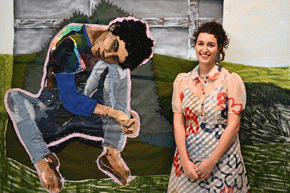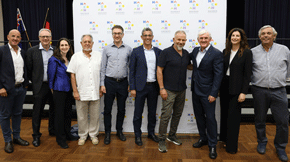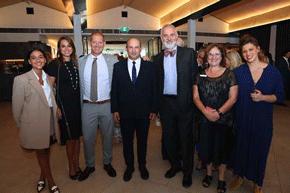Melbourne museum acquires rare haggadot
The Jewish Museum of Australia has the acquired rare and unique haggadot including hand-illustrated manuscripts dating back to the year 1781 from Amsterdam.

The haggadah is one of the most important religious and artistic artefacts of Jewish life.
The acquisition pieces are diverse in their origins and time of publishing, ranging from Spain and Italy, to 19th century Morocco and Yemen, to 20th century USA and Israel. These include remarkable and scarce manuscripts from some of the lesser-known and now almost vanished Jewish communities, such as those from Yemen, Iraq and India. The haggadot are an important addition to the Museum’s collection. Prior to the acquisition, the Museum had a sizeable collection of haggadot in its holdings, but the new artefacts are of mostly greater value, artistic quality, rarity and/or other significance.
Director & CEO of the Jewish Museum, Rebecca Forgasz, says that these haggadot give us great insight into Jewish life across many diverse cultures and moments in time. “There’s a whole lot of important and different stories told by this collection, which is why we are really thrilled to have them. In historical terms, the illustrations within this collection of haggadot tell us a lot about the communities, their culture, their values, and about how assimilated or not assimilated they were in the wider community around them. But the illustrations and illuminations in the haggadot are also fine examples of artistic practice in their time and place, and therefore help us to exhibit the history and diversity of Jewish artistic tradition.”
Charles Leski, auctioneer, collector of Judaica, and then director of Mossgreen, managed the sale of the haggadot. He was approached by Dr. Harry Buckstein, who had built up a diverse and beautiful collection. “He wasn’t a religious man”, says Leski, “but he just loved the haggadah. He brought the love of Pesach with him from his childhood, and he’s delighted to know that the haggadot have found their way to the Museum.” The haggadah is one of the most widely published Jewish traditional and liturgical texts throughout Jewish history. Leski says, “It occured to me that you might not find a prayer-book or a tanach (bible) in a Jewish home, but you are likely to find a haggadah. It’s a remarkable document that really permeates Jewish life everywhere, and gives tremendous information and insight on when and where they were printed.”
The artefacts were purchased with the assistance of the Copland Foundation, who generously granted the Museum $20,000. Katherine Kovacic, a trustee from the Copland Foundation remarks “we could see immediately how important it was for these haggadot to stay as an entire collection and not get broken up for sale, and that it went to an institution who would appreciate them on so many different levels.”
An additional $10,000 was raised between several major donors, including Board member Marcia Pinskier and her husband, Henry. Marcia says, “this is a museum that caters to such a breadth of not just the Melbourne Jewish community but the wider Jewish community. On behalf of the Board I want to say thank you to everybody who’s taken part, stepped up, and especially to the Copland Foundation.”
The museum is offering a “behind-the-scenes” viewing of the haggadot to celebrate Pesach and the new acquisition.
This special viewing will take place in the curatorial department on April 12, and each tour will be 20 minutes long with up to 10 people at each session. The event is free with Museum admission, but bookings are essential.
Bookings can be made by clicking here.









